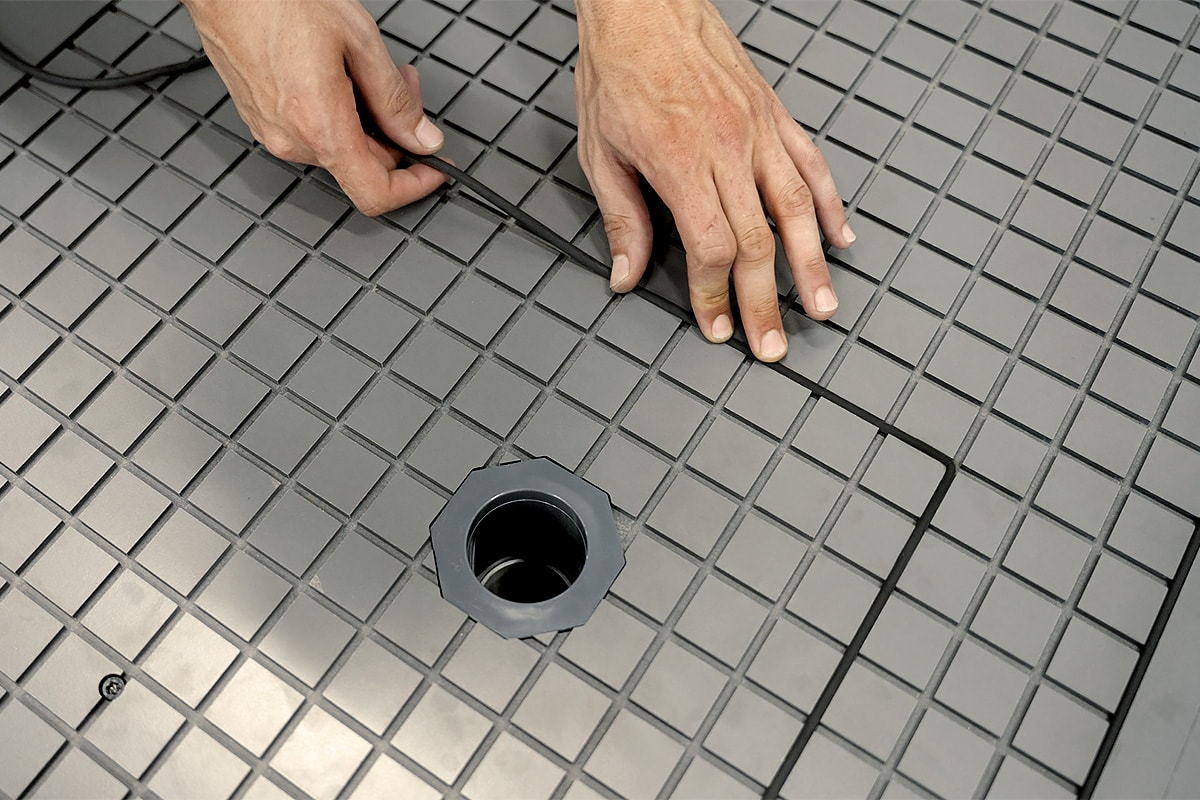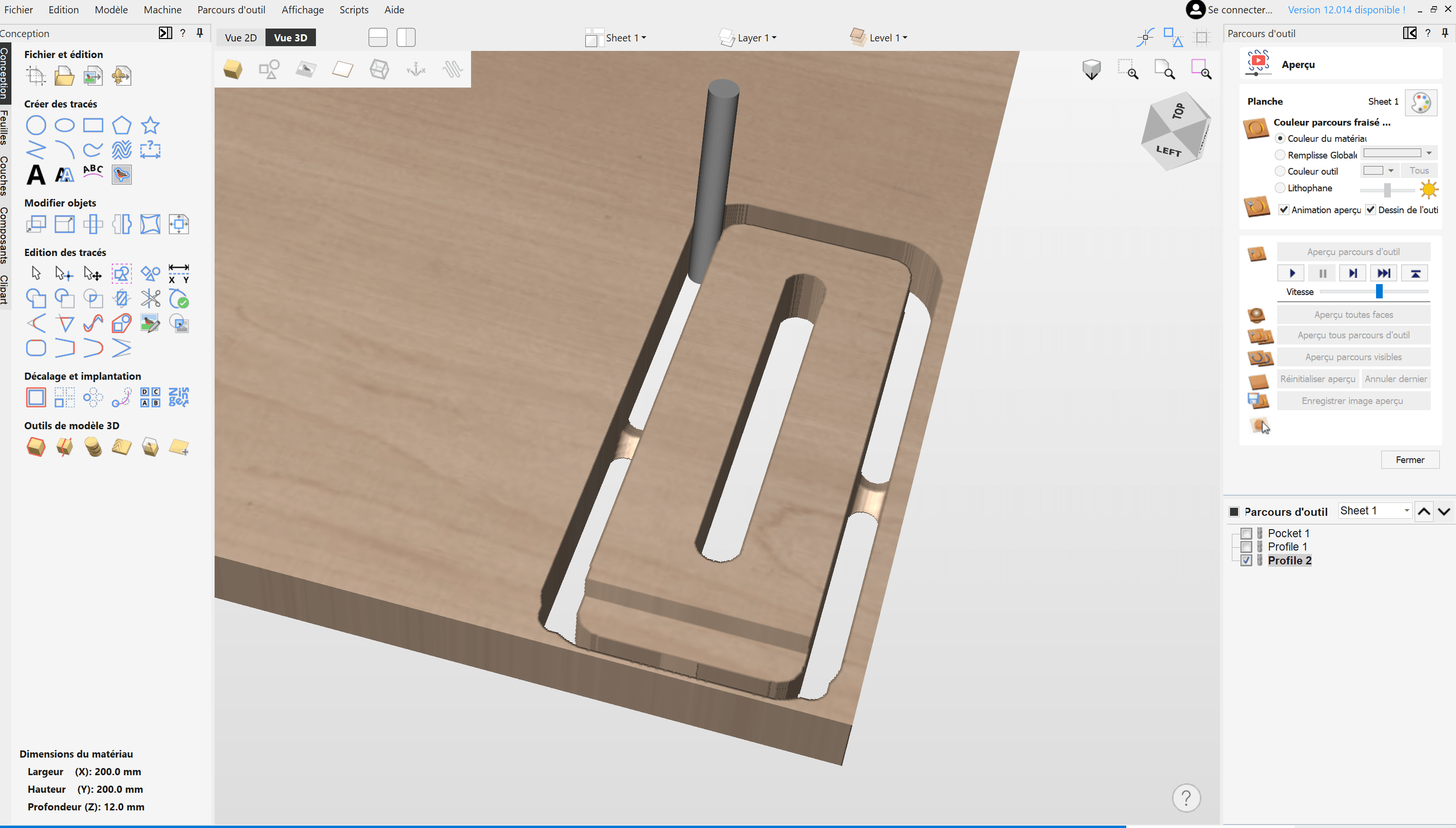Starting your journey in CNC milling is a thrilling experience, especially when you realize how much time your new machine can save you by handling precision work. The satisfaction of watching your spindle navigate its way through more and more complex workpieces in unmatched.
But as you grow used to the convenience, small imperfections in the process will start to stand out. Constantly screwing and unscrewing stock, losing material to avoid end-mill collisions with nails, and dealing with clamping systems will become frustrations that eat into your productivity.
If you’re at the stage where you want to move to a 100% hassle-free experience and focus entirely on optimizing your designs and production time, it might be time to consider a vacuum table for your CNC machine.
What is exactly a vacuum table?
A vacuum table is a specialized workholding fixture designed to streamline and accelerate the machining process.
Unlike traditional clamping systems that complicate and slow down the machining process, a vacuum table offers a clear, flat surface for securing workpieces during cutting, milling, or engraving operations, while offering the quickest transitions between jobs.
How does a vacuum table work ?
Vacuum tables operate by leveraging the pressure differential between the vacuum beneath a workpiece and atmospheric pressure above, generating a hold-down force.

A vacuum table is made of different elements working together to generate this vacuum:
- The vacuum pump removes air and create the vacuum
- The plenum is a special board where the vacuum is generated, serving as the work surface
- The piping system connects the pump to the plenum
- The bleeder board (optional) is a porous MDF board that spreads the vacuum and protects the plenum from deep cuts and machining mistakes.
For more in-depth information on the design and components of a vacuum table, see our detailed article.
Types of vacuum solutions

Hole Matrix Tables
These tables feature a grid of evenly spaced holes through which vacuum is applied, creating suction across the entire surface. They are versatile and suitable for various workpiece shapes and sizes.
Grid Tables
Grid tables feature a pattern of intersecting channels that distribute vacuum evenly through these channels, ensuring consistent suction. They are ideal for large workpieces.
Vacuum clamps
This system simply consists of several pads, which can be moved and attached to your working area. Connected to a vacuum pump, these clamps securely hold your workpiece in place.
Advantages of vacuum tables

In CNC machining, effective workholding solutions are essential for achieving precision and optimizing production.
Vacuum tables, specifically designed for this purpose, offer several key advantages:
Enhanced precision and accuracy
Vacuum tables securely hold workpieces without the need for external clamps or fixtures, providing an unobstructed, flat work surface. Whether you’re engraving, milling, or cutting, this setup leads to cleaner, more precise results.
Reduced setup time and downtime
Efficient setup is essential for productivity. Vacuum tables simplify your process with no manual clamping and time-consuming adjustments.
Simply position the workpiece, activate the vacuum, and you’re ready to go with a setup that enables easy and quick removal of the workpiece translates to more machining time and increased productivity.
Reduced wastage
Without the need for side clamping, vacuum tables allow you to minimize material wastage, saving significant amounts of raw material over time.
Inconvenients of a vacuum table
Aside from the initial investment, vacuum tables come with very few drawbacks.
Limited material compatibility
Vacuum tables are generally best suited for flat and slick materials. They may not work as well with materials with uneven surfaces or irregular shapes. Fortunately, CNC routers typically handle flat workpieces.
Small Parts Handling
Lower ends or cheap models of vacuum tables can have difficulty handling small workpieces due to the limited surface area available for the vacuum to grip.
Additional noise
While CNC machining is inherently noisy, adding a vacuum table can increase the overall noise in your workshop.
Which materials work with a vacuum table?

A vacuum table can hold a wide range of materials to CNC machine, including:
- Wood: Plywood, MDF, and hardwoods are commonly used with vacuum tables
- Plastics: Materials like acrylic, polycarbonate, and PVC can be securely held
- Sheet metals: Aluminium, brass, steel : If your CNC machine can handle it, the vacuum table will hold it still
- Composites: Materials like carbon fiber and fiberglass work well
- Foam: High-density foams and insulation boards can also be help securely
These materials are generally flat and slick, which ensures a strong vacuum seal. Other materials can be used as long as they are not overly porous or do not have large holes that could compromise the vacuum.
Cost considerations
Price ranges can vary from a few hundred to several thousand euros, depending on factors such as size, features and brand.
Size of the working surface
Larger vacuum tables generally cost more due to the increased material and manufacturing requirements. Consider the dimensions needed for your specific workpieces and choose your vacuum table accordingly.
Features and Accessories
- Vacuum Pump: The quality and capacity of the vacuum pump are major price determinants, with high-performance pumps costing more.
- Zoning Capabilities: Vacuum tables with advanced zoning capabilities, allowing for selective vacuum area control, typically cost more due to their enhanced design and functionality.
- Vacuum Gauges and Control Systems: Integrated or advanced control systems and vacuum gauges for monitoring and adjusting vacuum pressure can add to the overall cost.
- Accessories and Additional Features: Additional accessories such as filters, adapters, high-quality hoses and fittings can increase the overall price.
- Material and Build Quality: Tables made from high-grade materials like aluminum or HPL plates, with a high-quality surface finish and tight flatness tolerances, will be more expensive.
Brand and Quality
Established brands often come with a higher price tag due to their reputation for quality and reliability. If you are just curious about how a vacuum table works, investing in a more notorious brand might not be useful, but if you are serious about enhancing your production process, investing in a high-quality, durable vacuum table is essential.
In summary, vacuum tables enhance both precision and productivity in CNC machining. Their advantages extend beyond the technical—they’re productivity enhancers and contribute to a smoother workflow and better overall results.
Should I buy a vacuum table ?
As with any purchase, deciding whether to invest in a vacuum table depends on your specific needs and circumstances :
- Evaluate your workflow: Consider the type of work you currently do and plan to do in the future. A vacuum table is most beneficial if your projects involve frequent, precise machining of flat workpieces.
- Assess Benefits: Assess your available budget with the long) term advantages, such as increased precision, time savings and reduced material waste. A vacuum table can pay for itself over time by optimizing your production process and offering a strong return on investment. However, if you only use your CNC machine occasionally, the investment may not be as worthwhile.
In essence, a vacuum table is a smart investment for those looking to enhance productivity and precision in regular CNC machining operations.
When in doubt, talk to one of our experts!
Contact us here!
We are always happy to share our experience so that you make the best choice according to your own personal projects.







